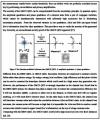
Introduction to Coherent States and Quantum Information Theory
by Kazuyuki Fujii
Publisher: arXiv 2002
Number of pages: 72
Description:
The purpose of this paper is to introduce several basic theorems of coherent states and generalized coherent states based on Lie algebras su(2) and su(1,1), and to give some applications of them to quantum information theory for graduate students or non-experts who are interested in both Geometry and Quantum Information Theory.
Download or read it online for free here:
Download link
(440KB, PDF)
Similar books
 The Temple of Quantum Computing
The Temple of Quantum Computingby Riley T. Perry
A quantum computing tutorial for everyone, including those who have no background in physics. In quantum computers we exploit quantum effects to compute in ways that are faster or more efficient than, or even impossible, on conventional computers.
(14853 views)
 A brief introduction of quantum cryptography for engineers
A brief introduction of quantum cryptography for engineersby Bing Qi, Li Qian, Hoi-Kwong Lo - arXiv
We present the principles behind quantum key distribution and discuss a few well-known QKD protocols. We focus more on the implementation of QKD protocols rather than security analysis. Another topic covered here is the security of QKD systems.
(13692 views)
 Quantum Information Meets Quantum Matter
Quantum Information Meets Quantum Matterby Bei Zeng, et al. - Springer
The draft version of a textbook, introducing the quantum information science viewpoints on condensed matter physics to graduate students. We keep the writing in a self-consistent way, requiring minimum background in quantum information science.
(6633 views)
 Superconducting Qubits and Circuits
Superconducting Qubits and Circuitsby Steven M. Girvin - Yale University
These lectures are devoted to understanding the basic components of quantum machines that can be constructed from superconducting electrical circuits. These circuits can be used to create resonators which store individual microwave photons.
(7331 views)